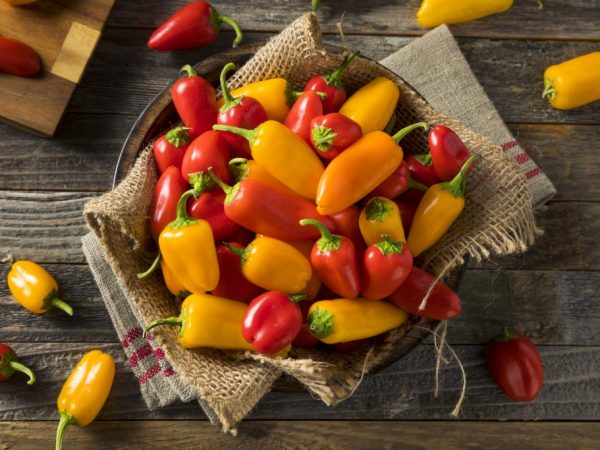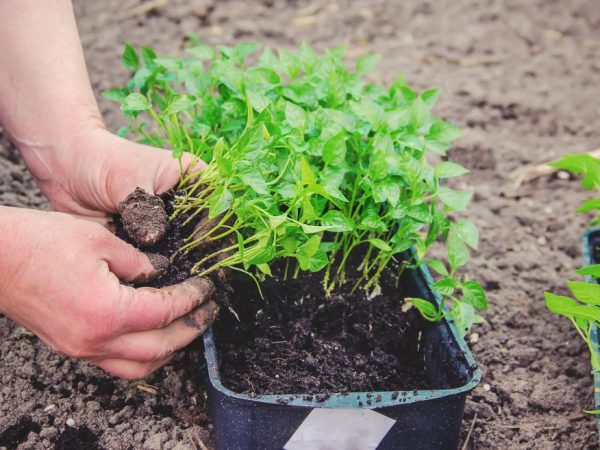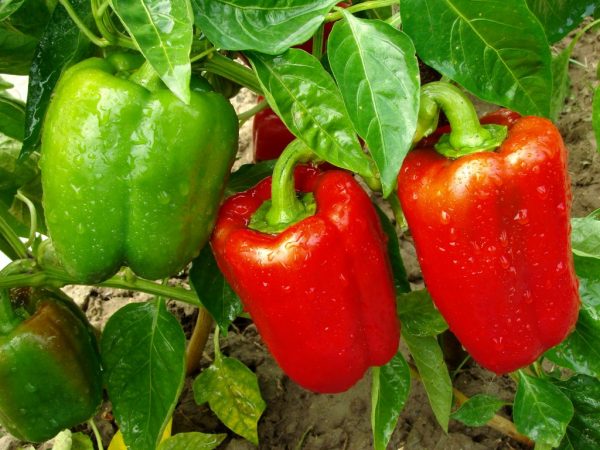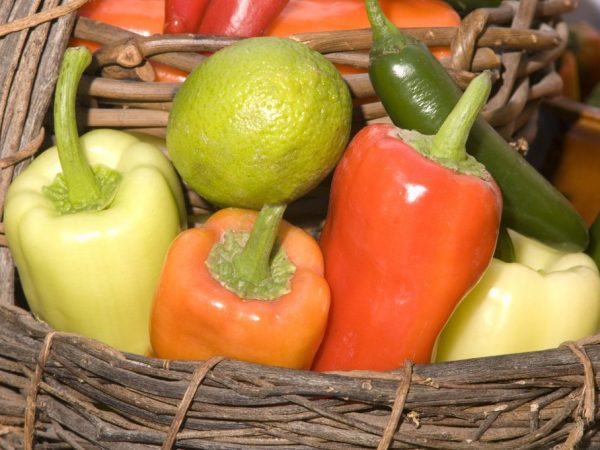Growing pepper Khalif F1
Japanese breeders have bred a hybrid culture - Khalifa pepper, which immediately won the favor of many vegetable growers due to its numerous positive characteristics. The plant is actively grown in many summer cottages, bringing its owners a decent harvest.

Growing pepper Khalif F1
Characteristics of the variety
Each plant has certain characteristics that are taken into account when growing it. Knowing the description of the crop, the gardener has the opportunity to get an excellent harvest.
Pepper Khalif is classified as an early ripening species. Fruiting begins after 90-95 days from the moment the first shoots appear.
Growing a vegetable is possible both in greenhouse conditions and in the open field. The fruiting period differs in duration.
Bush
The bush has the following characteristics:
- plant height is 50-90 cm;
- it is compact but requires shaping.
Fruit
Description of fruits:
- vegetables are cuboid, dense in structure;
- the color of the fruit at the stage of technical ripeness is milky white, light green, biological - deep red;
- the pulp is juicy, without the characteristic bitterness of pepper;
- vegetables are easy-going, perfectly stored, able to endure long-term transportation without losing their taste and marketability;
- the fruits are universal in use: they can be used fresh or for the preparation of winter preparations.
Yield
Under favorable conditions, the yield of Khalifa f1 pepper pleases gardeners with high rates: from 1 m² per season, you can collect more buckets of selected vegetables. Large, fleshy fruits weigh 100-200 g. It is better to collect them at the moment of technical maturity, which will not delay the formation of subsequent ovaries.
Advantages and disadvantages
Among the benefits of pepper are the following:
- the hybrid plant forms well ovaries in almost any growing conditions;
- the variety has increased resistance to diseases such as tobacco mosaic;
- under favorable conditions, the plant is capable of producing the highest yield for such crops.
Among the main disadvantages are a weak root system and the need to tie up and form a bush.
Growing seedlings

We plant seedlings
Pepper variety Khalif f1 is recommended to be grown in seedlings due to the fact that the growing season of the plant is long. This method allows you to plant mature seedlings in a permanent place, which will be able to quickly adapt to new conditions.
Conditions
In order for the seedlings to be healthy and strong, a number of growing conditions must be observed:
- the optimum temperature for germinating seeds should be 25-28 ° C;
- containers for sowing and the soil into which the seeds will be placed, it is advisable to pre-disinfect by steaming (pour with a hot solution of potassium permanganate, disinfect with hydrogen peroxide or another antiseptic) or calcination (the soil is kept for 30-40 minutes in a hot oven);
- until the seedlings are planted, it should be fertilized at least 2 times with organic fertilizing.
Landing time and technology
Sowing vegetable seeds should be 50-70 days before transplanting seedlings to a permanent place. Sowing begins in March-April.
Technology:
- before sowing, it is recommended to soak the seed for 15-30 minutes. in a weak solution of an antiseptic agent (potassium permanganate, hydrogen peroxide, etc.) with the addition of a growth stimulator (Kornevin, Epin, etc.);
- after disinfection, the seeds are dried, if desired, they can be germinated. To do this, they are placed in a damp cloth and placed in a warm place for 1-2 days. During this time, the material must not be allowed to dry, therefore, it is necessary to regularly moisten the seeds with warm water using a spray bottle;
- the seed is placed in a common container or separate containers in moist soil at a depth of 1-1.5 cm. After that, the planting is covered with a film material and placed in a warm dark place until the first shoots appear. During this period, it is advisable to air the seedlings daily;
- after the appearance of young shoots, the film is removed from the container, and the seedlings are placed in a well-lit warm place.
Seedling care
Young and immature seedlings require increased attention. It is regularly necessary to water them with warm, settled water, avoiding waterlogging or drying out of the soil. If the sprouts look weakened and lifeless, it is suggested to fertilize the soil with a liquid fertilizing with organic matter.
If the culture was sown in a common box, after 2-3 true leaves appear on the seedlings, it is dived (transplanted) into separate containers with a volume of 0.3-0.5 liters. The root system of young peppers is sensitive to damage, so making a pick should be extremely careful.
After transplanting, the pepper may stop growing. In this stressful period for crops, you can spray them with the drug "Epin" or another substance that stimulates their growth.
Transplanting seedlings

Sweet and tasty peppers in fertilized soil
Sweet peppers of the Khalif variety grow well in light, loose, well-fertilized soil. In the fall, organic and potassium-phosphorus fertilizers are preliminarily introduced into it. In the spring, it is desirable to enrich the soil with ammonium nitrate (30-40 g per 1 m).
5-7 days before transplanting seedlings, it is recommended to decontaminate the soil with a solution of copper sulfate (1 tbsp. L. Per 10 l of water).
Seedlings are transplanted into open ground when the soil has warmed up well and the risk of nighttime cold snaps is minimal (late spring-early summer). For greenhouse cultivation, peppers can be planted in early April.
Planting scheme for young peppers Khalif f1: 3-4 bushes are placed on 1 m². It is necessary to place the seedling in the hole at the same depth at which it grew in the nursery, without exposing the root system and without hiding the root collar in the soil. Immediately after transplanting, it is advisable to water and attach the culture to a support installed nearby.
Peppers are prone to over-pollination, so planting several varieties nearby is not recommended.
It is advisable to plant this vegetable after legumes, early cabbage, herbs or onions.
Care
Proper care of pepper will give you the opportunity to get the maximum yield of high-quality vegetables. This contributes to the fact that the crop will have good immunity, less susceptibility to diseases and pest attacks typical for these vegetables.
Watering
Moistening the soil should be regular, but moderate.Excess moisture can lead to bacterial diseases of the root system of the culture, and its lack will weaken the vegetable - the leaves will turn yellow and crumble and the yield will be much lower.
Watering is carried out in the morning or in the evening with warm rain or settled water. It is desirable to alternate it with loosening and weeding. This will keep moisture in the soil for a longer time, and air access to the rhizome will improve. Some growers use straw to mulch the soil.
Top dressing

Peppers need constant care
During the season, pepper is advised to fertilize at least 3-4 times. Systematic monitoring of the state of plants will allow you to quickly determine what substance is missing in the soil.
In the phase of appearance of 1-2 true leaves, the first feeding is carried out using such a solution: 2-3 g of superphosphate, 0.5 g of nitrate, 1-2 g of potassium substance are added to 1 liter of water. After 2 weeks, feeding is repeated, increasing the amount of mineral fertilizers up to 2 times.
Top dressing of pepper with nettle infusion, a solution of chicken droppings (1:10) is popular among gardeners. It is advisable to alternate them with mineral feeds (1 tbsp. L. Nitrophoska per 10 liters of water).
Potassium-phosphorus fertilizers must be applied regularly to the soil, which affect the number of ovaries on the crop and the quality of vegetables.
Pruning and shaping the bush
The Khalifa pepper bush is described as compact, but this does not relieve the grower of the need for regular pinching (pruning) of the crop. Its essence lies in the removal of lateral shoots, which accelerate their growth in wet weather. It is undesirable to carry out pinching in the heat: the presence of additional foliage on the bush protects the soil from rapid evaporation of moisture.
The lower, longest shoots are subject to pruning, you need to try to achieve maximum illumination of the bush with sunlight. It is also worth removing unnecessary branches of the culture. Stepping is carried out 1 time in 7-10 days, if necessary - more often.
The Khalifa variety requires the formation of a bush, followed by tying it up. When the culture reaches a height of 20-25 cm, the top, which is located on the main stem, is removed. Of the remaining strong shoots, it is recommended to leave no more than 3-4 stepsons.
To accelerate the ripening of vegetables, gardeners advise once again to additionally remove the top of the bush plant after half the fruiting period.
Disease and pest control
Among the diseases that the vegetable is exposed to, gray and white rot, downy mildew, late blight, black leg, etc. are distinguished. The Caliph has an increased immunity to such a disease characteristic of peppers as tobacco mosaic.
It is much easier to take preventive measures that will prevent the onset of the disease than to cure an already infected crop. As a prophylaxis against diseases, the following treatments are carried out:
- 0.05% potassium permanganate solution;
- "Previkur";
- 4% copper oxychloride solution;
- bordeaux liquid;
- charcoal, etc.
As a prevention of diseases, it is imperative to take into account the crop planting scheme, do not overmoisten the soil, and regularly ventilate the greenhouses. A systematic examination of vegetables will make it possible to notice the disease in the early stages of its development.
Among the pests that can negatively affect the yield of pepper, there are aphids, spider mites, slugs, Colorado beetles, etc. They are regularly treated with special fungicides, combining them with folk methods (infusions of garlic, onion, dandelion, celandine, etc.).
Harvesting and storage
Depending on the region and the conditions under which the Khalif variety is grown, fruiting begins in mid-late July and continues until the first frost. Suitable for harvesting vegetables in a state of biological and technical ripeness. In the second case, the fruits should be set aside for ripening.
Harvesting is carried out every 6-8 days using a sharp knife. This will prevent the possibility of damage to the pepper or its stalk, which could shorten the shelf life.
Store vegetables in wooden boxes in a cool and ventilated place. Regular inspection is required to remove damaged fruits from the general container. With the correct storage organization of the Khalifa sweet pepper, it can retain its qualities for up to 2 months.
Gardeners reviews
Those who were engaged in cultivation of the variety, note the high taste of the fruits, their good keeping quality and transportability. Vegetable growers recommend to closely monitor the external condition of the plant, to carry out all the necessary feeding.
Particular attention should be paid to the formation of the bush and its garter. Abundant yields can provoke breaking or damage to the branches of the crop. It is advisable to tie up not only large stems to the support, but also weaker branches.
The Khalifa is a great option for the budding gardener. Observing the basic rules of cultivation, which are relevant for all hybrid plants, you can enjoy a rich harvest of healthy and tasty vegetables.

